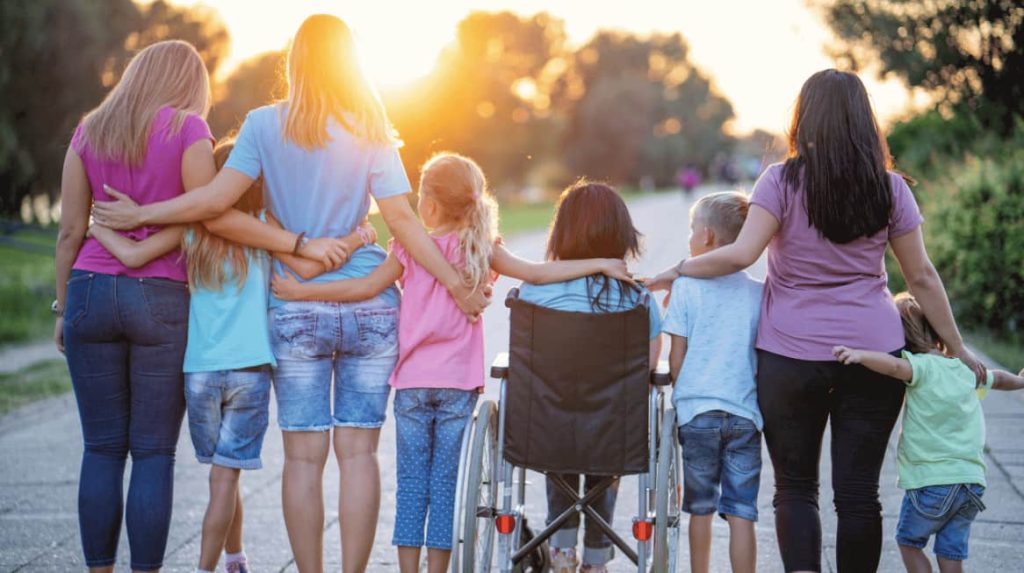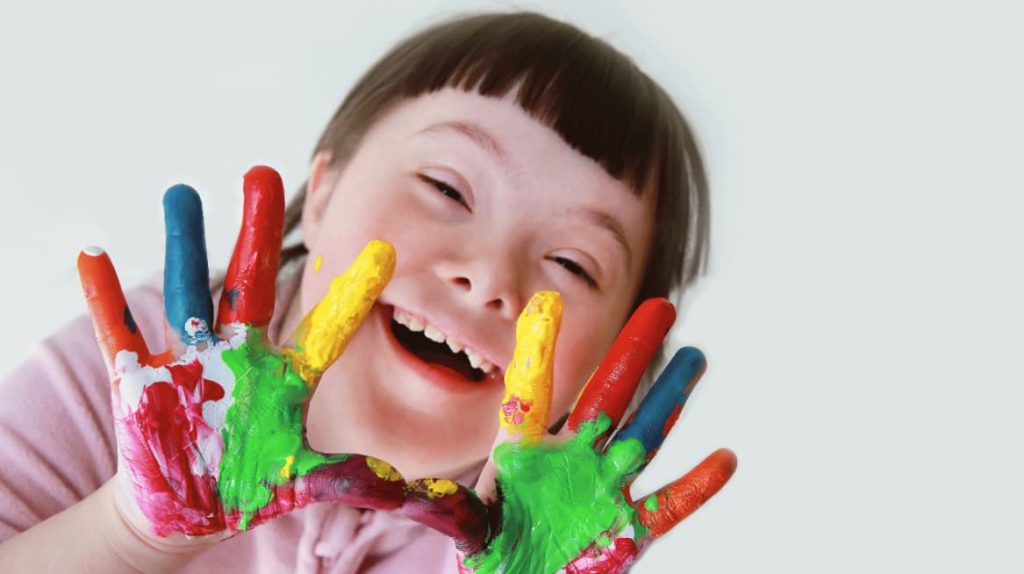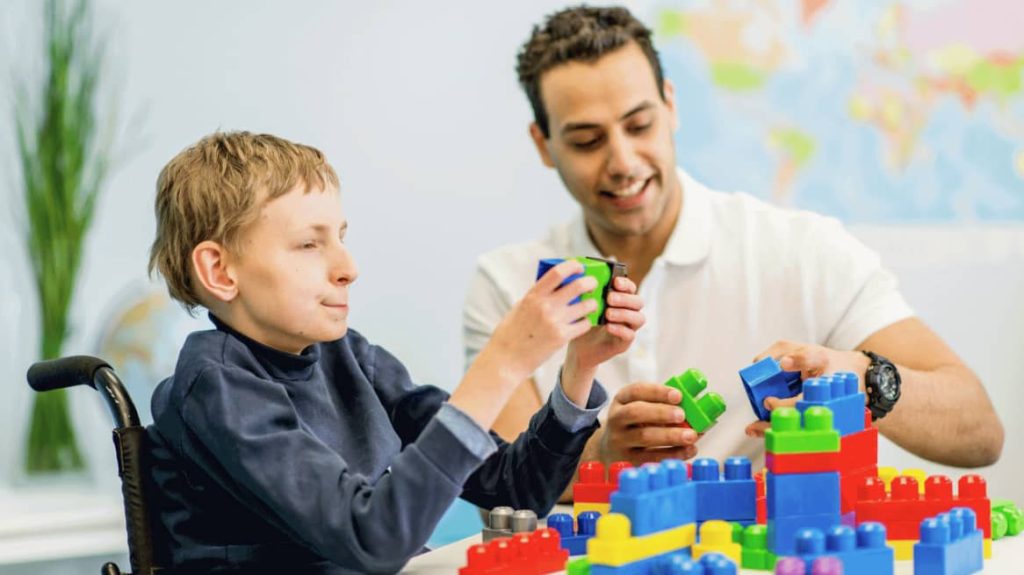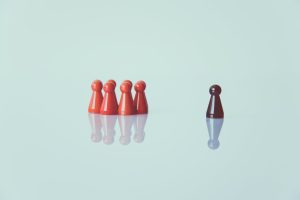There is so much diversity in the world, but one type of diversity that often gets overlooked or forgotten is disability diversity. That’s why every July in the United States, it’s important to observe Disability Pride Month! A disability is any condition of the mind or body that makes it more difficult for someone to partake in certain activities and may impair their ability to participate easily in normal daily pursuits.
Disability Pride Month is a great awareness month dedicated to celebrating the accomplishments and the importance of people with disabilities in our communities, promoting the visibility of people with disabilities, and honoring the inherent right to a better quality of life for people with disabilities. Learn how you can celebrate and what nonprofits to support this Disability Pride Month!
About Disability Pride Month

Disability Pride exists as a response and counteraction against ableism and social stigma. While millions of people around the world and across generations have dealt with or will experience some type of disability at least once in their lives, people with disabilities have been misunderstood and marginalized by society for hundreds of years. That’s why Disability Pride Month is important!
Since the 1800s, organizations by and for people with disabilities have existed, but they exploded in popularity in the 1900s. As more and more activist organizations began to gain traction, it became clear that the nation needed to adopt more comprehensive civil rights legislation to increase independence and fully integrate people with disabilities into U.S. society.
On March 12, 1990, over 1,000 people marched to the U.S. Capitol to demand that Congress pass the Americans with Disabilities Act in a protest that is now known as the “Capitol Crawl.” When they reached the Capitol Building, many activists left their wheelchairs and powerchairs and shed their other mobility aids to crawl up the steps to demonstrate the inaccessibility of public spaces and push senators to vote yes on the act. During the protest, 104 activists were arrested for unlawful demonstration, many in their wheelchairs.
On July 26, 1990, President George H.W. Bush signed the Americans with Disabilities Act (ADA) into law. That year, people celebrated the first Disability Pride Month to mark the passing of the bill. The month was created with the intention to honor every kind of disability, the people who identify with them, and the wide range of supports and types of assistance they need to thrive.
How to celebrate Disability Pride Month

Learn about the history of the Disability Rights Movement
Before you start celebrating Disability Pride Month, learn about why you should be celebrating! While the history primer we’ve already provided is a great place to start, the history of disability rights is vast and there is so much to learn. For one, there is much diversity in the disabled community and it’s important to understand the different types of intellectual and developmental disabilities, as well as how we can best meet everyone’s varying needs. While cracking open a book or watching a video are easy ways to learn, attending a Disability Pride event and meeting people with disabilities is also a great way to better understand the history of the Disability Rights Movement!
Share your disability story and listen to others’
During Disability Pride Month, it’s essential to shine a spotlight on what disability pride is and to give people with disabilities a platform to share their experiences. If you feel comfortable with sharing your own disability story, you can use your social media platforms to share why you celebrate Disability Pride Month and what disability pride means to you! If you know others with disabilities, encourage them to share their own stories with the world. It’s important to engage with others and continue the conversation about how we can continue to make the world more accessible for people with disabilities.
Take action
While we celebrate Disability Pride Month and the strides we’ve made in breaking the stigma around disabilities and increasing accessibility, it’s important to know that there is still a long way to go. This Disability Pride Month is a perfect time to let your elected officials know about accessibility problems in your community and policies that help and hurt the people with disabilities that they represent. You can also spend time volunteering and donating to nonprofits that provide important services to people with disabilities. If you’re not sure what nonprofits you can support, check out our list!
Nonprofits to donate to

Harwood Center
The Harwood Center is a private nonprofit agency that provides education, therapy, and support for Mid-South families and children who have developmental disabilities. Founded in 1957, they specialize in helping children with developmental & behavioral challenges and who have diagnoses such as autism, Down syndrome, cerebral palsy, speech, language and processing disorders, physical and gross motor disorders, prematurity, behavioral disorders, and many other developmental disabilities. They provide many of their therapeutic programs and services at their clinic at the University of Memphis, and since their founding, they have helped over 5,000 children with developmental disabilities. Donate to support their mission here.
Berkshire Family & Individual Resources
Berkshire Family & Individual Resources (BFAIR) is a national and state accredited human service agency dedicated to responding to the unique needs of people with disabilities and their families in the Berkshires region of western Massachusetts. They specialize in helping people with cognitive disabilities, autism, and acquired brain injuries and have programs to address accessibility at home, in the community, and at their very own center. Donate to support their mission here.
Doug Flutie Jr. Foundation for Autism
The Doug Flutie Jr. Foundation for Autism’s mission is to help people and families affected by autism to live their life to the fullest. Their programs improve quality of life in seven important dimensions, ensuring that they are informed, educated, employed, active, social, safe, and supported. They also provide financial assistance for families and grants for autistic individuals looking to achieve excellence in the sports and fine arts communities. Donate to support their mission here.
LightHouse for the Blind and Visually Impaired
Founded in 1902, LightHouse for the Blind and Visually Impaired is headquartered in San Francisco, California and provides education, training, advocacy, and community for blind individuals in California and around the world. As one of the largest and most established comprehensive blindness organizations in North America, the nonprofit has a variety of programs established to respond to many different needs, including blind and low vision training classes, employment immersion opportunities, counseling and psychological services, youth programs, and more. Donate to support their mission here.
Area Agency on Aging of Broward County
The Areawide Council on Aging, Inc. of Broward County as the Area Agency on Aging of Broward County (AAABC) is a nonprofit that serves the senior residents of Broward County in the state of Florida. In addition to serving adults over the age of 60, through their Aging and Disability Resource Center, they also serve individuals 18 years of age or older who have been diagnosed with dementia or live with a disability. With their programs, they provide meals & food assistance, health & wellness classes, transportation services, caregiver services, and more. Donate to support their mission here.
Final thoughts
Disability Pride Month is essential to increasing the visibility of people with disabilities, breaking the stigma around disabilities, and continuing to do work to increase accessibility of public spaces for a higher quality of life for everyone. This Disability Pride Month, find ways to celebrate and advocate for people with disabilities in your own communities, or show your own pride throughout the month of July!



